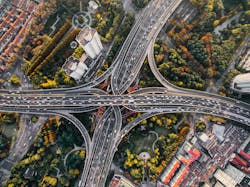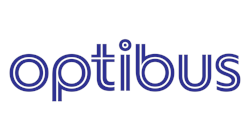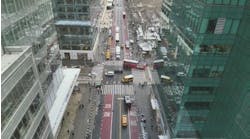After decades of urban growth and technological hype, the future of mass transit is nigh. Over the next 20 years, we will see two billion more people move to cities. Today, we’re seeing futuristic concepts like flying buses and hyperloops moving beyond the theoretical. Exciting times, but with these seismic shifts comes the demand for infrastructural changes to support this new reality and maximize productivity. Many industries are already adopting ground-level changes, and as a leading factor in facilitating movement both within a city and connecting it to others, urban mobility is one which will be especially impacted.
As more people are forced to negotiate the existing urban jungles, will flashy new transportation modes be enough to efficiently handle the huge influx? Can we rely on updated vehicles alone to alleviate the challenges that will accompany a new age of increased urban population?
New World Trains, Old World Tracks
A hundred years ago, mass transit operators in major cities considered population density, geographic area, current demographics and other such factors when developing routes. Because there was no way to inform passengers when the bus would arrive, the plans were fixed and static. Though many of these factors have long since become irrelevant, the original routes remain largely unchanged. Today, those hand-drawn plans still hang on walls, outdated and inefficient. Drivers and vehicles are not repurposed or dynamically assigned, resulting in deadhead routes, perpetual delays, and wasted mileage.
Even with GPS, smart phones and connectivity at our fingertips, transportation remains far behind the technological curve. To properly accommodate the expanded urbanization which is already underway, municipalities and public transport operators will need to seriously look at revamping operating infrastructure to upgrade and synchronize the underpinnings of mass transportation in cities.
The classic criteria for usable mass transportation systems are speed, comfort, safety, cost, proximity, timeliness and directness. And today’s buses, ridesharing companies, and shuttle services are not ranking very highly with any of these. The services are either too static, too expensive or simply cannot support the growing number of travelers, especially with the growing demand for dynamic transportation.
Transit Transitioning
The biggest obstacle faced by the transportation industry right now is how to improve mobility and reduce road congestion. On average, New York City commuters wasted a whopping 74 hours in traffic last year, contributing to increased gas emissions and blowing thousands of dollars; in fact, transportation is the second largest household expense. Simultaneously, over 17 million new cars were sold in the US, perpetuating the problem further by clogging the roads with private vehicles. Given the inefficiencies of mass transit and the perpetual gridlock that accompanies it, it’s no surprise that the American Public Transportation Association found that nearly every major transit system saw a decline in ridership from 2014-2016, with a national average of 4.5 percent loss.
Though vehicle electrification and autonomous technology are rapidly advancing, there is no existing platform that can accommodate and support these types of mass transit vehicles. New tech-based overhauls will not be possible without the infrastructural networks on which they’ll be dependent in order to operate. It’s getting harder to ignore that transit systems are not equipped for the driverless electric future that we are anticipating.
Right now, modes of transportation do not communicate and don’t understand one another. Negative passenger experience is diverting passengers to other methods of transit that are more fast, convenient, and geographically on point. Ride-hailing operators have stepped up to fill the demand for flexible transportation — but it isn’t a long-term solution, causing increased congestion and wasted mileage while accommodating mostly single passengers.
Tech Solutions – Long Term
More than ever before, now is the time for a system overhaul. Although admittedly less sexy, it’s time to deemphasize glittery new innovations still in their infancy — for now — in favor of modernizing mass transportation. These critical services, the only infrastructure developed and funded enough to shuttle masses of people every day, must remain — but they must be made better. Affordable and accessible to people from all walks of life with the capacity for real-time data processing and instantaneous adjustments and updates, modernized city-wide transportation has the potential to meet consumer demands, it just lacks operational management and control.
Operators need to utilize the data available and adopt new technologies that will reconfigure the way they work to make systems more efficient, and in doing so, likely save them lots of money. The tools are out there: cities have access to demand data that can dynamically adjust the transportation system to real-time, and machine learning can predict demand so we can assign and time vehicles accordingly. Now it’s time for mass transit to start implementing these technological advances. Digitization and modernization can save transportation providers a significant amount of time, money, energy and endless headaches over snarled lines and disgruntled customers.
As a legacy system, transit providers have paved the way — literally and figuratively — for mobility and connectivity. As hard as it might be to adapt to an entirely new system of management, mass transportation only stands to benefit and extend its capabilities by moving forward.
Amos Haggiag is the CEO and co-founder of Optibus, a dynamic platform for city-wide mass transportation planning and operation. Amos holds a B.Sc. in Mathematics and Computer Science from Ben-Gurion University, decorated by the Wolf and Intel prizes. Prior to founding Optibus, Amos worked at Microsoft. His past experience includes working with optimization and graph algorithms, machine learning, distributed systems, and big data.




